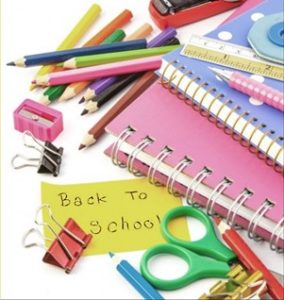With the average spending on back to school items rising, national nonprofit ACCC provides consumers with 5 ways to save when going back to school.
August 18, 2015

American Consumer Credit Counseling has provided families with five tips for frugal back-to-school savings without breaking the bank
Parents are spending hundreds of dollars to get their children ready for school this year. A recent survey from the National Retail Federation found the average amount spent on annual back-to-school expenses has grown 42 percent over the last 10 years. According to this survey, this year, the average family with children in grades K-12 plans to spend $630 on electronics, clothes, and other school necessities.
“The start of a new school year does not have to be costly. It should be exciting and satisfying knowing that you are saving money,” said Steve Trumble, president and CEO of American Consumer Credit Counseling. “Families and students should not feel stressed out when shopping efficiently and strategically because they will be able to purchase all the essentials for their school year.”
August is generally a good time to get all of your back to school shopping done — there are many sales that you can take advantage of, and some states offer tax-free holidays.
American Consumer Credit Counseling offers these five ways to save on back to school items:
- Make a List and Stick to the Budget: Before splurging on supplies and clothing, sit down and set a maximum amount of how much you want to spend. Making a list will help gain perspective for the items you need and also help you determine if you can purchase some items at a later date. Be sure to involve your children in decision making, because it will help them understand the value of saving money and purchasing needs over wants.
- Bargain: Who doesn’t love a good bargain? Look out for those back-to-school deals, whether it’s signing up for email alerts about coupons or comparing prices of products from different retail stores. Also, garage sales and thrift stores are great places to find college dorm furniture as well as children’s clothing. In addition to buying supplies, try to purchase value or multi-packs; that way you will have a surplus to store away for the next school year.
- Reuse: There is no need to buy new supplies every year. If notebooks are not fully written in from last year, then tear out the old pages and continue to use it until it’s filled. Do not forget about left over pens and pencils from last year too.
- Lifetime Warranty: Think about buying a backpack that comes with a lifetime warranty. Land’s End, L.L. Bean and REI are among the many different companies that promise to replace your worn and used items forever.
- Back-to-School Budget Calculator: When trying to consider all of your shopping expenses, try a back-to-school budget calculator. ACCC’s budget calculator gives families and students insightful information on how their expenses are going to be used and where to make the necessary adjustments. With your list in hand and your estimated budget, you will be ready for back-to-school shopping.
ACCC is a 501(c)3 organization that provides free credit counseling, bankruptcy counseling, and housing counseling to consumers nationwide in need of financial literacy education and money management. For more information, contact ACCC:
- For credit counseling, call 800-769-3571
- For bankruptcy counseling, call 866-826-6924
- For housing counseling, call 866-826-7180
- Or visit us online at ConsumerCredit.com
About American Consumer Credit Counseling
American Consumer Credit Counseling (ACCC) is a nonprofit credit counseling 501(c)(3) organization dedicated to empowering consumers to achieve financial management and debt relief through education, credit counseling, and debt management solutions. ACCC provides individuals with practical debt solutions for solving financial problems and recognizes that consumers’ financial difficulties are often not the result of poor spending habits, but more frequently from extenuating circumstances beyond their control. As one of the nation’s leading providers of financial education and credit counseling services, ACCC’s certified credit advisors work with consumers to help them determine the best plan of action to get out of debt and regain financial stability. ACCC holds an A+ rating with the Better Business Bureau and is a member of the Association of Independent Consumer Credit Counseling Agencies. For more information or to access free financial education resources, log on to ConsumerCredit.com or visit TalkingCentsBlog.com.

